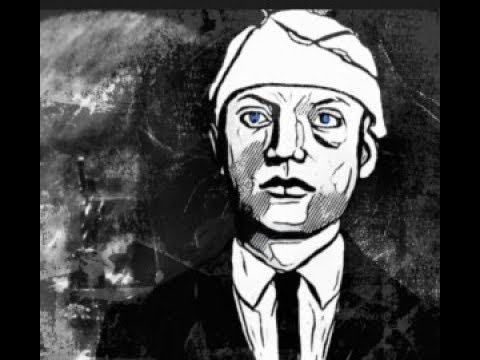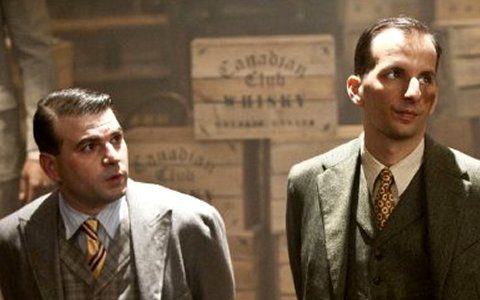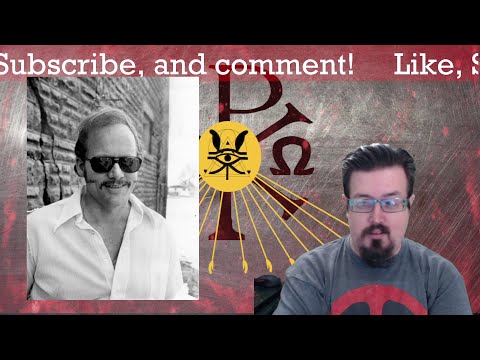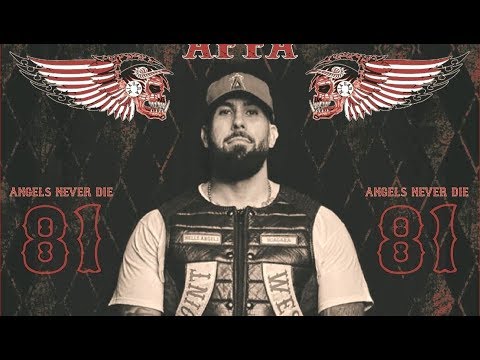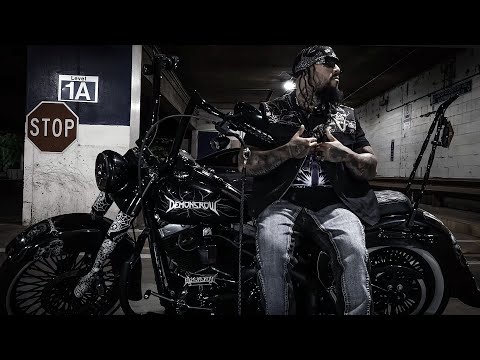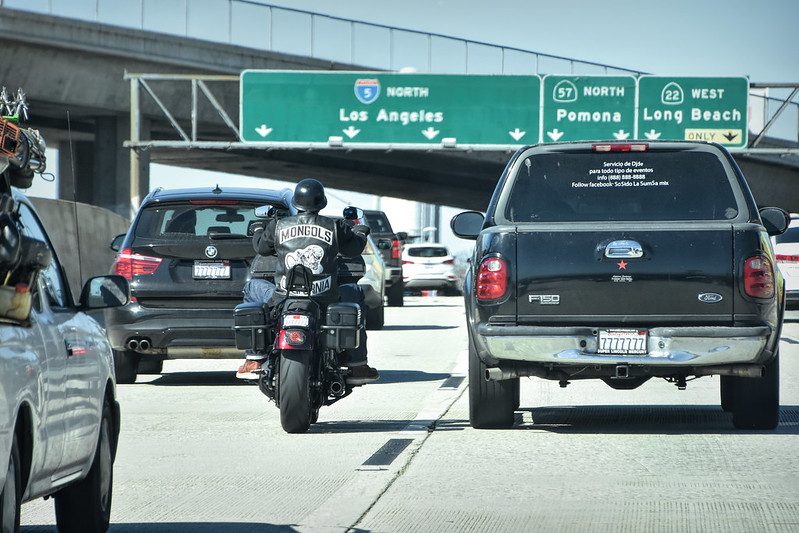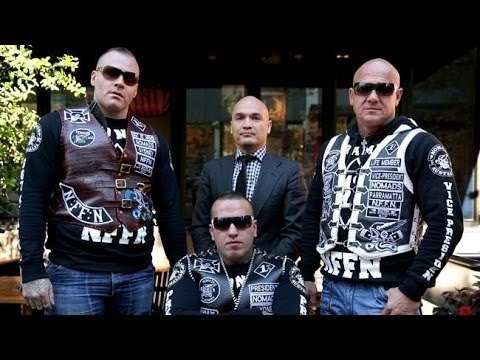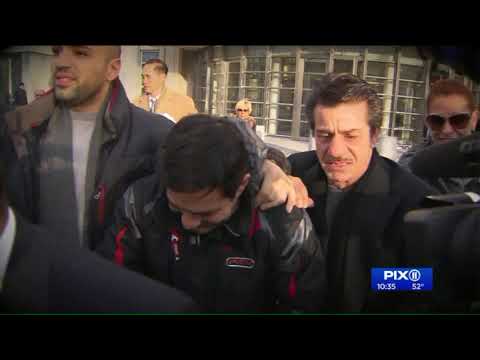Wherever a mafia organization plies its trade, it is feared. Even national governments find it difficult to take on such organizations. Most lesser criminal gangs stand no chance at all. However, the 10 gangs on this list were bad and bold enough to take a stand against the mafia.
10 Gustin Gang
In America, 1920’s Prohibition proved good for organized crime, and South Boston was no exception. There, the Gustin Gang didn’t make moonshine or operate speakeasies. Instead, they hijacked other gangs’ trucks. Their exploits caused grief for both Italian and other Irish gangs, right up to the moment that enterprising Italian mobsters put an end to Gustin Gang leader Frankie Wallace and another Irish hoodlum, Dodo Walsh. Although the effectiveness of the Gustin Gang declined after Wallace’s murder, the organization persisted, as did the feud with the Italian gangs, who were some of the precursors to the American mafia.[1]
9 White Hand
Before the formation of New York’s five American mafia families, there were simply Italian gangs, but they were not the only criminal organizations to claim the city. Their chief rivals were Irish gangs, especially Dinny Meehan’s White Hand (so named because it opposed the Italian mobs known as the Black Hand gangs). However, when Meehan was murdered in 1920, William “Wild Bill” Lovett took over as the gang’s leader, warring with Italian and other Irish gangs alike until his own murder: Lovett was beaten and shot to death in October 1923. Both Meehan and Lovett were ruthless enemies, but neither of them matched Richard “Peg Leg” Lonergan, who took over after Lovett’s murder. Facing off against Joe Adonis, Albert Anastasia, Vincent Mangano, and others, Lonergan declared war against the men who would form the New York branch of the American mafia, showing he was earnest by seizing more of the waterfront as his territory. He even dared to invade rival Joe Adonis’s “social club.” Unfortunately for the White Hand leader, his brashness had gotten the better of his judgment, and he and two of his men were killed in an ambush. No one stepped up to claim the White Hand’s leadership vacancy, and the gang disbanded.[2]
8 Lanzetti Brothers’ Gang
In 1911, when 21-year-old Salvatore “Don Tiriddu” Sabella took charge of Philadelphia’s emerging mafia family after serving as an apprentice to the Brooklyn mob’s Giuseppe Traina, Sabella took on rival gang leader Max “Boo Boo” Hoff for control of the city’s bootlegging and gambling operations. Sabella was astute enough to assume that, even among his own gang, there might be men who would seek to depose him in favor of gaining his position. In 1925, believing that Leo Lanzetti, Vincent Cocozza, and Joseph Zanghi were disloyal to him, Sabella ordered them to be killed. Lanzetti was dispatched in a drive-by shooting as he exited a barbershop. In 1927, the other targeted men were killed on the street. All three deaths were intended to send the message to Sabella’s other underlings that the same fate awaited any among them who dared to defy their don. In 1933, Sabella, then 40, had stepped down as the leader of the Philadelphia crime family to serve as its consigliere when he was brought to trial for the murders of Cocozza and Zanghi. Although he was acquitted and released on the same day, his protégé John Avena was murdered on a street corner by the surviving Lanzetti brothers, who retained a measure of power in the city. Avena was replaced with Joseph Bruno, who ordered Willie Lanzetti’s death. The resistance of the Lanzetti Brothers’ Gang to the Philadelphia mafia ended with Willie’s homicide, and the remaining Lanzettis soon departed from the City of Brotherly Love.[3]
7 Celtic Club
During the 1970s, the Celtic Club, an Irish gang led by Danny Greene, took on the Cleveland mafia. The result, says reporter Scott Bernstein, was nearly a decade of “bombings, beatings, and murders.” Death followed death, and victims included both rivals and members of the Celtic Club itself who’d fallen out of favor with the organization’s leader. Among the former, Bernstein states, were Cleveland Jewish mobster and numbers lottery boss Alex “Shondor” Birns, car bomb victim; Cleveland mob figure John Conte, beating victim; Cleveland mob associate and labor union strong arm Joe Kovach, gunshot victim; Cleveland mafia underboss Calogero “Leo Lips” Moceri; an “innocent civilian”; Frank Pircio, car bomb victim; aspiring Buckeye State mafia overlord and labor union boss John Nardi, car bomb victim; and Cleveland Irish mob boss Danny “The Irishman” Greene, car bomb victim; among others. As Bernstein points out, the Celtic Club also suffered losses in the protracted “war” with the Cleveland mafia. Greene’s lieutenant, Art Snepeger, blew himself up while trying to attach a bomb to a rival’s car. Greene shot former friend Michael “Big Mike” Fratto to death after Fratto became a rival. Hells Angel Enis “Eagle” Crnic was blown apart by the bomb he sought to attach to “a vehicle belonging to eastside Italian mob associate” John “Johnny Del” Delzoppo. A car bomb ended the life of Cleveland Irish mob boss Danny “The Irishman” Greene. Irish mob lieutenant Elmer Brittain was a gunshot victim. Irish mob strong arm Keith “The Enforcer” Ritson was also taken out by gunshot. Two attempts were made to murder Greene himself. Bernstein notes that, on May 12, 1975, “Greene’s Eastside Cleveland apartment [was] blown up with Greene sleeping in it, but he [survived].” The Celtic Club leader wasn’t as lucky the next time when, on October 6, 1977, Greene was killed in a car bombing.[4]
6 The Westies
The brutality of Hell’s Kitchen’s Irish gang, the Westies, horrified even New York City’s District Attorney Robert Morgenthau. The gang had committed “at least 28 unsolved murders,” he said. In addition, the criminals had also disposed of their victims’ bodies by dismembering them. The gang’s ruthlessness was seconded by Michael Cherkasky, head of Morgenthau’s rackets bureau, who observed that the Westies were violent “for violence’s sake.” They were miscreants, Cherkasky added, who thought nothing of showing a victim’s decapitated head to their barroom acquaintances. Although the Westies would later become hitmen for the American mafia’s Gambino family, at first, the gang stood up to the family. In fact, in 1977, when Charles “Ruby” Stein, a mafia loan shark, made his Hell’s Kitchen rounds, James Coonan, the Westies’ leader, and one of his men murdered Stein. Then, they dismembered him, took his little black book, and collected the debts owed to the dead man, keeping the money for themselves. Their act got the attention of Paul Castellano, the Gambino family godfather, and Coonan and his lieutenant Francis “Mickey” Featherstone were invited to meet with Gambino and 14 other men of the Gambino and Genovese families in a Brooklyn restaurant. Coonan had ordered a reserve of his own gang members, armed with machine guns and hand grenades, to stand by in a neighborhood apartment with instructions to storm the club next to the restaurant and kill everyone inside unless they heard from Coonan and Featherstone within two hours. As a result of the meeting, during which Coonan denied killing and robbing Stein, Castellano and Coonan became allies. From then on, Coonan would have to seek Castellano’s approval before committing murders and, in exchange for the privilege of using the godfather’s “name in business,” Coonan would have to give Castellano 10% of everything the Westies made.[5]
5 Hells Angels Motorcycle Club
For the most part, in the United States, the Hells Angels Motorcycle Club and the mafia are allies. The same situation is not the case in Ontario, Canada, where a ferocious “war” is underway between the two organized crime organizations. The Ontario mafia has launched six attacks on the Hells Angels’ gathering places, including a Woodbridge member’s tattoo parlor and a London Hells Angel’s Muskoka cottage. The attacks have not dissuaded the Hells Angels from attempting to muscle in on the province. According to author Peter Edwards, the belligerents in the war are “on one side…aggressive young computer-friendly newcomers from [British Columbia] and Quebec allied to a gang called The Wolfpack Alliance [and]…on the other side…the old guard—the GTA [Greater Toronto Area] arm of the traditional ‘Ndrangheta family of Cosimo ‘The Quail’ Commissio of Siderno, Italy.” The Hells Angels continue to face formidable opposition from the Ontario mafia, as they do from the Royal Canadian Mounted Police. However, in December 1999, the bikers strengthened their position in the Ontario underworld by accepting the members of 13 other local and regional bikers’ organizations as their own. The unprecedented event swelled the Hells Angels’ ranks while bringing the violence of their previous rivals to an end. In 2008, a similar mass enlistment of previous rivals into the ranks of the Hells Angels occurred in Niagara, and the Hells Angels became the dominant outlaw motorcycle gang there as well.[6]
4 Outlaws Motorcycle Club
The Outlaws Motorcycle Club and the Detroit mafia’s Giacalone crew began an alliance during the 1970s. Like the local Highwaymen Motorcycle Club, the Outlaws were partners in the mafia’s narcotics trade, serving, in addition, as the enforcers for Anthony “Tony Jack” Giacalone and Vito “Billy Jack” Giacalone. Watch this video on YouTube Despite their alliance, the Outlaws, who were active throughout the American Midwest and the southern United States, wanted the lucrative but illegal revenue generated by the Giacalone brothers’ dice games. In the early 1990s, the Outlaws’ leader, Harry “Taco” Bowman, decided it was time to act. They would start by demanding that crap game operators pay them the protection money that had, until then, been paid to the Giacalone brothers’ outfit. In response, the leaders of the Detroit mafia crew put a hit on Bowman. They assigned the task to a couple of their more ambitious soldiers, Nove Tocco and Paul “Big Paulie” Corrado. When repeated attempts to assassinate Bowman failed, the would-be killers became wary. They were right to suspect that something might be wrong, as the Federal Bureau of Investigation was intercepting and recording their conversations, during which the hitmen voiced their doubts and fears. According to Tocco’s father, Paul, who was also a hitman on the Giacalone brothers’ crew, Jackie Giacalone was angry that he’d lost a craps game operation to Taco. As a result, Jackie had instigated the pushing of Tocco and Corrado at “Taco.” Before their misgivings could be resolved, though, Jackie and Billie Giacalone were imprisoned for bookmaking. As a result, the crew’s leaders rescinded their hit on Bowman. Later, during a meeting between Bowman and Tony Jack, fences were mended.[7]
3 Mongols Motorcycle Club
In 2004, bad blood developed between the Mexican mafia—a gang originally formed in American prisons rather than itself a Mexican criminal organization—and the Mongols, an outlaw motorcycle gang. During a motel room party following a drug sale in Arcadia, California, several Bassett Grande street gang members attacked a Mongol customer. The Mexican mafia had placed a bounty on the customer’s head for having broken a Sureño code of conduct as a former Sureño, or Southern California Hispanic Street gang member. The bounty obliged the Bassett Grande street gang members or any other Sureño to kill the marked victim. When the Bassett Grande street gang members rushed the targeted Mongol, he stood fast, expecting his fellow bikers to assist him, but two of them fled. During the melee, the targeted Mongol was killed, and another of the bikers was severely injured. A week later, in Rosemead, California, a Mongol who’d checked into a motel along with several others in his gang poked his nose into the business of a Sangra Sureño gang member who was cooking up meth in another of the motel’s rooms. After that, words were exchanged between the two groups several times before the Sangra Sureño gang, noticing the presence of Los Angeles sheriff’s deputies, disassembled their lab and packed up their equipment and drugs. Before they could leave, the Mongol who’d originated the dustup again confronted them, and the Sureños shot him, killing him. Police caught a fleeing suspect and confiscated the Sangra Sureño gang’s equipment and drugs. The Mexican mafia demanded $20,000 from the Mongols, the cost of lost drug revenue. The Mongols refused to pay. In an attempt to prevent a full-scale war between the bikers and the Mexican mafia, a news reporter, acting as an intermediary between the gangs, set up a meeting between them. A few weeks later, a man on a Japanese motorcycle entered a Mongol tattoo shop and shot up the place, killing the proprietor. The Mongols understood that the Mexican mafia had put out a hit on the entire biker gang, obligating every Sureño everywhere to kill any and all Mongols. When the assassin was arrested, the Mexican mafia also put out a hit on him, fearing he would turn informer. An attempt was made on his life while he was in prison, but he survived. Bad blood remains between the Mongols and the Mexican mafia.[8]
2 Pagan’s Motorcycle Club
According to John Hall, author of Riding the Edge: A Motorcycle Outlaw’s Tale, a March 1980 morning was the last that “Gentle Don” Angelo Bruno, the leader of the Philadelphia mafia, would ever see. A hitman jammed a gun against Bruno’s head and blew the godfather’s brains out. After a “war” between his family and rival gangsters ended, Nicomedo “Little Nicky” Scarfo became the new head of the crime organization. Dreaming of expanding his territory to empire dimensions, Scarfo demanded payment from businesses operating in his territory. Hired muscle collected the tributes, severely beating anyone who refused to pay up to warn others not to make the same mistake. In most cases, Scarfo’s unconventional collections tactic worked like a charm. However, when his thugs threatened the Pagan’s Motorcycle Club’s Philadelphia chapter, the menacing message not only fell on deaf ears, but the Pagans also laughed in the would-be enforcers’ faces. Scarfo ordered his men to carry out his threats, but they balked, convincing Scarfo that the Pagans were not a group he would want as his enemies. Ultimately, the mafia leader backed down, exempting the Pagans from the extortion payment. Despite their differences, the Philadelphia mafia and the Pagans were reluctant business partners at times. The implicit truce between them ended in April 1982, however, when, after meeting to discuss their partnership in methamphetamine distribution and sales, underboss Salvatore “Chuckie” Merlino rammed his car into a Pagan’s motorcycle, injuring the biker. The Pagans retaliated by firebombing a Merlino associate’s car and shooting up caporegime Salvator Testa’s house and Merlino’s mother’s residence, where Merlino was staying. To settle the matter, the mob paid the bikers $5,000 for Kachbulian’s injuries and the damage to his motorcycle. Afterward, an uneasy truce began again between the Philadelphia mob and the Pagans.[9]
1 Rudaj Organization
Supposedly, members of the Rudaj Organization, wanting to send a message to the Gambino mafia family, sauntered into John Gotti’s favorite restaurant and commandeered his table. However, according to Ron Rubenstein, a lawyer for Prenka Ivezaj, one of the defendants indicted in October 2004 for racketeering, attempted murder, extortion, loan-sharking, gambling, and bookmaking, the boast could not be corroborated. Neither should anything be made of the fact that members of the Rudaj Organization, aka the Albanian group, aka The Corporation, attended Gambino family godfather John Gotti’s funeral. The accused were nothing more than “wannabes,” Rubenstein explained, seeking attention. Besides Ivezaj, the indictment named Nikola Dedaj, Ljusa Nuculovic, Angelo DiPietro, Nardino Colotti, and the gang’s leader, Alex Rudaj. Together, these men, prosecutor Jennifer Rodgers charged, oversaw 50 video gambling machines. Although the machines themselves were legal, payouts to winners were not, nor were the payments the gang allegedly charged to restaurants and social clubs in the Bronx and Astoria for “protection,” nor were the collection from these same establishments of gambling revenue. One machine alone could bring in as much as $7,000 a week. Such ill-gotten gains occasioned rivalry between the Rudaj Organization and the Gambino mafia family. After a “showdown” between them at the Soccer Field club in Astoria, Ivezaj was recorded as saying, had mafia members reached for their guns, “everybody” would have died.[10]

